Family Eye
Adolph Rosenblatt, Eli Rosenblatt, Joshua Rosenblatt
Eileen Coyne, Caitlin Harris
Emily Clark, Jon Millstein, Nate Millstein
Mara Manning, Kiefer Ledell Waterman
Frank Jackson, Amy Podmore, Ruby Jackson
Donald Fabricant, Gwen Fabricant, Jonathan Fabricant
August 10th to September 14th
Opening August 10th 4pm to 6pm
Images are all at the bottom of this page.
The Re Institute is pleased to present a group show of artists connected by the most basic social structure, family. The question for this show is does family affect the way an artist sees? Does this influence move between or across generations? What does it mean to be an art family?
Adolph Rosenblatt, Eli Rosenblatt, and Joshua Rosenblatt:
Joshua Rosenblatt:
Looking and being excited about looking. Noticing reflections and odd juxtapositions. Observing how the light is moving and changing. My father would share this contagious enthusiasm about seeing the world around us with our family. It wasn’t about looking at the spectacular - a vista or a sunset - it was about looking at what is around you all of the time and fully absorbing it. . I would watch in awe as he translated his enthusiasm into sculptures that were about his immediate surroundings.
As I make my artwork, I realize that so much of my ability to observe and appreciate what is right in front of me was informally and unintentionally taught. This series of drawings is about looking at the New Jersey landscape from the turnpike - a landscape that I have passed through many times but without ever stopping long enough to truly see. Now, I see a landscape of nature and industry pushing against each other, each looking for room in a very limited space. I am struck by how the industry is passing through the landscape in a very literal way; roads, fences and electric cables are all stretching out to someplace else. In depicting these spaces, I wanted to avoid industrial romanticism and instead show the individual structures of nature and industry on equal aesthetic footings and acknowledging the non-spectacular.
Eileen Coyne and Caitlin Harris:
Eileen Coyne:
We have a very unique relationship as mother and daughter. We tend to look at the world through a similar lens. My teacher and mentor was also Caitlin’s teacher: Crimean-born artist Polina Osnachuk. Caitlin and I not only share a love for making art, we also share an immune system that has betrayed us throughout the years. However, the enduring journey to wellness and balance has contributed to the strength and beauty of our bond. It has caused us to lean in rather than look away. Despite the subsequent hills and valleys of anxiety and depression, art has helped us heal individually and together and has resulted in more empathy and honesty in our work and has given us a greater sense of depth and grace as we continue on our journey.
Caitlin Harris:
I’m proud of the ways I resemble my mother- in empathy, resilience, creativity, and kindness. We have the same eyes and instincts, even the same autoimmune disease. She took her first painting class when I was in middle school and encouraged me to sign up shortly after. We’ve grown so much since then in this uniquely paralleled journey during very different stages of our lives, pulling each other up as we navigate what it means to be an artist. I’m inspired by my mother’s mark making; it’s emotional, gestural, textured and spontaneous. As I get bogged down in the tiniest details, seeing her work is an important reminder in letting go of some control, relying more on instinct and impulse. It’s not just a love of art that connects us, it’s the absolute, urgent need to create as a means of self expression, communication, and sometimes even survival.
Emily Clark, Jon Millstein and Nate Millstein:
We are a family of 4 with 3 visual artists (and one writer). Jon, (husband and father) was a painter. Jon died in 2008. Emily (mother) makes sculpture and drawings. Nate (younger son) works in sculpture, print and installation. While we work in different materials we tend to be attracted to similar themes and motifs. The process of careful observation of the world around us informs all of our work. There is an element of decay, ruin, and the passage of time present in many of the pieces. The work also asks you to reconsider overlooked and ordinary objects. As we work with these objects we investigate their structure by dissecting, recontextualizing and reassembling them.
The work of Emily Clark (mother), Jon Millstein (deceased father) and Nate Millstein (son) each incorporate inanimate objects endowed with a sense of animism, and simultaneously a sense of decay/death. Emily’s work investigates bones and organic remains, creating a personal language of abstracted biomorphic, imagined shapes. Jon’s work studied everyday objects in unfamiliar, almost dream-like environments. Jon also incorporated bones, fossils and insects asking the viewer to make connections between inanimate objects such as a coffee cup and the skull of an animal. Nate’s work takes the industrial and forgotten remains of the modern era, all too familiar and almost invisible, and creates the sense of a life within these abandoned objects. His work imagines how these overlooked objects, just like us, grow old and eventually die
Mara Manning and Kiefer Ledell Waterman:
Mara Manning: Critique, conversation, and standing side-by-side looking at our work, or art in museums and galleries, is the eternal thread connecting my work to my son Kiefer’s. I love Kiefer’s depth of commitment to his unique methods, subject and style of working, and his titles! Kiefer’s eye for viewing is always sharp and fresh. He makes connections that help me see my work or others in a new way. Kiefer is quick to make observations that can make a lightbulb go off for me.
Our relationship as artists has always been one I consider collegial rather than mother/son. I love to visit his studio - which he prepares with care by hanging work that is completed or in progress. When I arrive to view Kiefer’s work he always has a whole gallery installation on the wall ready for discussion. The objects that hang with the work require attention just as each collage does. Making time for this kind of visit is very important to both of us. I see more and think more because of our relationship through art.
Our art-making process is very similar, while the results are quite different. We both work on numerous pieces at once. We use a method where layers are added, subtracted, obscured, and revealed as the composition and idea of the work begins to make itself known. Experimentation is a big part of the way we each work. Sometimes we do start a work with an idea in mind, but, more often it takes a long time for the idea/composition to flesh itself out.
Kiefer Ledell Waterman:
I have only ever known a world that has my mom in it. This statement extends to my artistic practice, which has always included her thoughts and critiques as well as my thoughts and ideas revolving around her work and her process. Though we have chosen different techniques, and our own unique experiences have led to different styles and subjects, our process is eerily similar.
We both start our projects with little care, allowing materials to build up and interact in the moment rather than planning out the piece's future. In this phase we draw, stumbling forward at a clip building layers, allowing the material to speak and interact through our hand. We then pause, reflect, step away, and sometimes deliberately attempt to slow our progress, working back more slowly, deliberately into the piece. We are hopefully able to identify what is working, and obscure what isn't - always leaving the evidence of what has been left behind in the physicality of our surfaces. We both enjoy this process of halting starts and stops, of figuring out the problems within each piece and how to solve them. This process often leads us into quagmires where we are unable to move forward or find our way back. It is in these moments that we draw on one another asking for advice. These critiques help to confirm a direction we might already be on, or allow us to reach for an entirely new perspective and drift.
Frank Jackson, Amy Podmore, and Ruby Jackson:
Frank Jackson:
It's, of course, expected that we notice over the years how each of us in our family resemble each other, share temperaments, odd traits, likes and dislikes, etc. What's been less predictable for me, but startling and delightful in its own way, is how over time we have been able to learn to see and greet each other as artists. I think we now acknowledge that we share certain creative aspects with each other, for better or worse, and I think we discovered a long time ago, or at least suspected, that we shared a sense of recognition, of curiosity, and aesthetics with our art, and music, respectively. Certainly, for Amy and I, we've been responding to each others art for a long time, and our life together has been built on the foundation of our respective studio practices. I think we always shared the understanding that there's joy (meaning) in making beautiful, strange, things come to life. And that joy has been extended as we have been able to watch our kids embrace their creative selves as they grew up, and I love that we all share this together. It's hard to parse out where the overlaps occur, what role nature vs. nurture plays, what impact being around artists their whole lives has had, but for myself, watching our daughter Ruby's hybrid "sculpture/paintings" come into being over the past decade, I think Amy and I both responded to them from our own lens of work and influences, and we each saw a bit of the other in them. Though distinct in her own use of materials and processes from mine, it was deeply moving to feel so innately connected to them.
Similarly, to listen to our son Cole's music, I'm reminded of the years where he was gathering his own influences, and figuring out how to create shape and story working within the borders of time and performance. It's such an interesting contrast to the general quietness of our studio practices, though there are many overlaps with craft, process and instinct. To be able to hear the poetics in how he uses language and imagery; how one phrase could be decided on, reworked, whispered to oneself as a kind of sketch, is to recognize the familiar act of choice in how we make things. That we have been able to see and hear some part of ourselves in each other as we follow our respective curiosities has been its own kind of creation. It's a weird, always morphing feeling, and a pure delight, too.
Donald Fabricant, Gwen Fabricant, and Jonathan Fabricant:
Jonathan Fabricant:
Both my parents are artists and so am I. Both Gwen Fabricant (b.1932) and Donald Fabricant (1932-1992) grew up in working class families in Brooklyn, NY in the 1940-50’s. Art for them was a revelation, a different way to be, a bright light and salvation, and a rebellion. I grew up in the world that they constructed, surrounded by creative people who had left the mainstream to look for something new and alive. I took it for granted that people could be artists. I lived in the artists' housing community Westbeth, with my mother, where everyone was a visual artist, writer, musician, actor, dancer "....".
But, aside from the blueprint of how to live my life as an artist, my parents gave me something else, mostly by osmosis. By just being around the “Stuff” of artmaking: the energy of their vision, the artworks that they created and collected, the books and the conversations overheard or joined with their peers, the odd found objects around the house, these formed my artistic core as much as anything. As I applied to college and declared my interest in the visual arts, both my parents railed against the idea. “Don’t do it“, they cried, although I could sense the pride behind their legitimate fears.
As for the formal, spiritual, conceptual or political influences that exist, or not, between my family’s work, a small snapshot of which is exhibited here at The Re Institute – I’m going to withhold comment, as I hope that the work speaks to that itself, and that you the viewer can tell me what you see.
Adolph Rosenblatt, Eli Rosenblatt, and Joshua Rosenblatt:
Joshua Rosenblatt:
Looking and being excited about looking. Noticing reflections and odd juxtapositions. Observing how the light is moving and changing. My father would share this contagious enthusiasm about seeing the world around us with our family. It wasn’t about looking at the spectacular - a vista or a sunset - it was about looking at what is around you all of the time and fully absorbing it. . I would watch in awe as he translated his enthusiasm into sculptures that were about his immediate surroundings.
As I make my artwork, I realize that so much of my ability to observe and appreciate what is right in front of me was informally and unintentionally taught. This series of drawings is about looking at the New Jersey landscape from the turnpike - a landscape that I have passed through many times but without ever stopping long enough to truly see. Now, I see a landscape of nature and industry pushing against each other, each looking for room in a very limited space. I am struck by how the industry is passing through the landscape in a very literal way; roads, fences and electric cables are all stretching out to someplace else. In depicting these spaces, I wanted to avoid industrial romanticism and instead show the individual structures of nature and industry on equal aesthetic footings and acknowledging the non-spectacular.
Eileen Coyne and Caitlin Harris:
Eileen Coyne:
We have a very unique relationship as mother and daughter. We tend to look at the world through a similar lens. My teacher and mentor was also Caitlin’s teacher: Crimean-born artist Polina Osnachuk. Caitlin and I not only share a love for making art, we also share an immune system that has betrayed us throughout the years. However, the enduring journey to wellness and balance has contributed to the strength and beauty of our bond. It has caused us to lean in rather than look away. Despite the subsequent hills and valleys of anxiety and depression, art has helped us heal individually and together and has resulted in more empathy and honesty in our work and has given us a greater sense of depth and grace as we continue on our journey.
Caitlin Harris:
I’m proud of the ways I resemble my mother- in empathy, resilience, creativity, and kindness. We have the same eyes and instincts, even the same autoimmune disease. She took her first painting class when I was in middle school and encouraged me to sign up shortly after. We’ve grown so much since then in this uniquely paralleled journey during very different stages of our lives, pulling each other up as we navigate what it means to be an artist. I’m inspired by my mother’s mark making; it’s emotional, gestural, textured and spontaneous. As I get bogged down in the tiniest details, seeing her work is an important reminder in letting go of some control, relying more on instinct and impulse. It’s not just a love of art that connects us, it’s the absolute, urgent need to create as a means of self expression, communication, and sometimes even survival.
Emily Clark, Jon Millstein and Nate Millstein:
We are a family of 4 with 3 visual artists (and one writer). Jon, (husband and father) was a painter. Jon died in 2008. Emily (mother) makes sculpture and drawings. Nate (younger son) works in sculpture, print and installation. While we work in different materials we tend to be attracted to similar themes and motifs. The process of careful observation of the world around us informs all of our work. There is an element of decay, ruin, and the passage of time present in many of the pieces. The work also asks you to reconsider overlooked and ordinary objects. As we work with these objects we investigate their structure by dissecting, recontextualizing and reassembling them.
The work of Emily Clark (mother), Jon Millstein (deceased father) and Nate Millstein (son) each incorporate inanimate objects endowed with a sense of animism, and simultaneously a sense of decay/death. Emily’s work investigates bones and organic remains, creating a personal language of abstracted biomorphic, imagined shapes. Jon’s work studied everyday objects in unfamiliar, almost dream-like environments. Jon also incorporated bones, fossils and insects asking the viewer to make connections between inanimate objects such as a coffee cup and the skull of an animal. Nate’s work takes the industrial and forgotten remains of the modern era, all too familiar and almost invisible, and creates the sense of a life within these abandoned objects. His work imagines how these overlooked objects, just like us, grow old and eventually die
Mara Manning and Kiefer Ledell Waterman:
Mara Manning: Critique, conversation, and standing side-by-side looking at our work, or art in museums and galleries, is the eternal thread connecting my work to my son Kiefer’s. I love Kiefer’s depth of commitment to his unique methods, subject and style of working, and his titles! Kiefer’s eye for viewing is always sharp and fresh. He makes connections that help me see my work or others in a new way. Kiefer is quick to make observations that can make a lightbulb go off for me.
Our relationship as artists has always been one I consider collegial rather than mother/son. I love to visit his studio - which he prepares with care by hanging work that is completed or in progress. When I arrive to view Kiefer’s work he always has a whole gallery installation on the wall ready for discussion. The objects that hang with the work require attention just as each collage does. Making time for this kind of visit is very important to both of us. I see more and think more because of our relationship through art.
Our art-making process is very similar, while the results are quite different. We both work on numerous pieces at once. We use a method where layers are added, subtracted, obscured, and revealed as the composition and idea of the work begins to make itself known. Experimentation is a big part of the way we each work. Sometimes we do start a work with an idea in mind, but, more often it takes a long time for the idea/composition to flesh itself out.
Kiefer Ledell Waterman:
I have only ever known a world that has my mom in it. This statement extends to my artistic practice, which has always included her thoughts and critiques as well as my thoughts and ideas revolving around her work and her process. Though we have chosen different techniques, and our own unique experiences have led to different styles and subjects, our process is eerily similar.
We both start our projects with little care, allowing materials to build up and interact in the moment rather than planning out the piece's future. In this phase we draw, stumbling forward at a clip building layers, allowing the material to speak and interact through our hand. We then pause, reflect, step away, and sometimes deliberately attempt to slow our progress, working back more slowly, deliberately into the piece. We are hopefully able to identify what is working, and obscure what isn't - always leaving the evidence of what has been left behind in the physicality of our surfaces. We both enjoy this process of halting starts and stops, of figuring out the problems within each piece and how to solve them. This process often leads us into quagmires where we are unable to move forward or find our way back. It is in these moments that we draw on one another asking for advice. These critiques help to confirm a direction we might already be on, or allow us to reach for an entirely new perspective and drift.
Frank Jackson, Amy Podmore, and Ruby Jackson:
Frank Jackson:
It's, of course, expected that we notice over the years how each of us in our family resemble each other, share temperaments, odd traits, likes and dislikes, etc. What's been less predictable for me, but startling and delightful in its own way, is how over time we have been able to learn to see and greet each other as artists. I think we now acknowledge that we share certain creative aspects with each other, for better or worse, and I think we discovered a long time ago, or at least suspected, that we shared a sense of recognition, of curiosity, and aesthetics with our art, and music, respectively. Certainly, for Amy and I, we've been responding to each others art for a long time, and our life together has been built on the foundation of our respective studio practices. I think we always shared the understanding that there's joy (meaning) in making beautiful, strange, things come to life. And that joy has been extended as we have been able to watch our kids embrace their creative selves as they grew up, and I love that we all share this together. It's hard to parse out where the overlaps occur, what role nature vs. nurture plays, what impact being around artists their whole lives has had, but for myself, watching our daughter Ruby's hybrid "sculpture/paintings" come into being over the past decade, I think Amy and I both responded to them from our own lens of work and influences, and we each saw a bit of the other in them. Though distinct in her own use of materials and processes from mine, it was deeply moving to feel so innately connected to them.
Similarly, to listen to our son Cole's music, I'm reminded of the years where he was gathering his own influences, and figuring out how to create shape and story working within the borders of time and performance. It's such an interesting contrast to the general quietness of our studio practices, though there are many overlaps with craft, process and instinct. To be able to hear the poetics in how he uses language and imagery; how one phrase could be decided on, reworked, whispered to oneself as a kind of sketch, is to recognize the familiar act of choice in how we make things. That we have been able to see and hear some part of ourselves in each other as we follow our respective curiosities has been its own kind of creation. It's a weird, always morphing feeling, and a pure delight, too.
Donald Fabricant, Gwen Fabricant, and Jonathan Fabricant:
Jonathan Fabricant:
Both my parents are artists and so am I. Both Gwen Fabricant (b.1932) and Donald Fabricant (1932-1992) grew up in working class families in Brooklyn, NY in the 1940-50’s. Art for them was a revelation, a different way to be, a bright light and salvation, and a rebellion. I grew up in the world that they constructed, surrounded by creative people who had left the mainstream to look for something new and alive. I took it for granted that people could be artists. I lived in the artists' housing community Westbeth, with my mother, where everyone was a visual artist, writer, musician, actor, dancer "....".
But, aside from the blueprint of how to live my life as an artist, my parents gave me something else, mostly by osmosis. By just being around the “Stuff” of artmaking: the energy of their vision, the artworks that they created and collected, the books and the conversations overheard or joined with their peers, the odd found objects around the house, these formed my artistic core as much as anything. As I applied to college and declared my interest in the visual arts, both my parents railed against the idea. “Don’t do it“, they cried, although I could sense the pride behind their legitimate fears.
As for the formal, spiritual, conceptual or political influences that exist, or not, between my family’s work, a small snapshot of which is exhibited here at The Re Institute – I’m going to withhold comment, as I hope that the work speaks to that itself, and that you the viewer can tell me what you see.
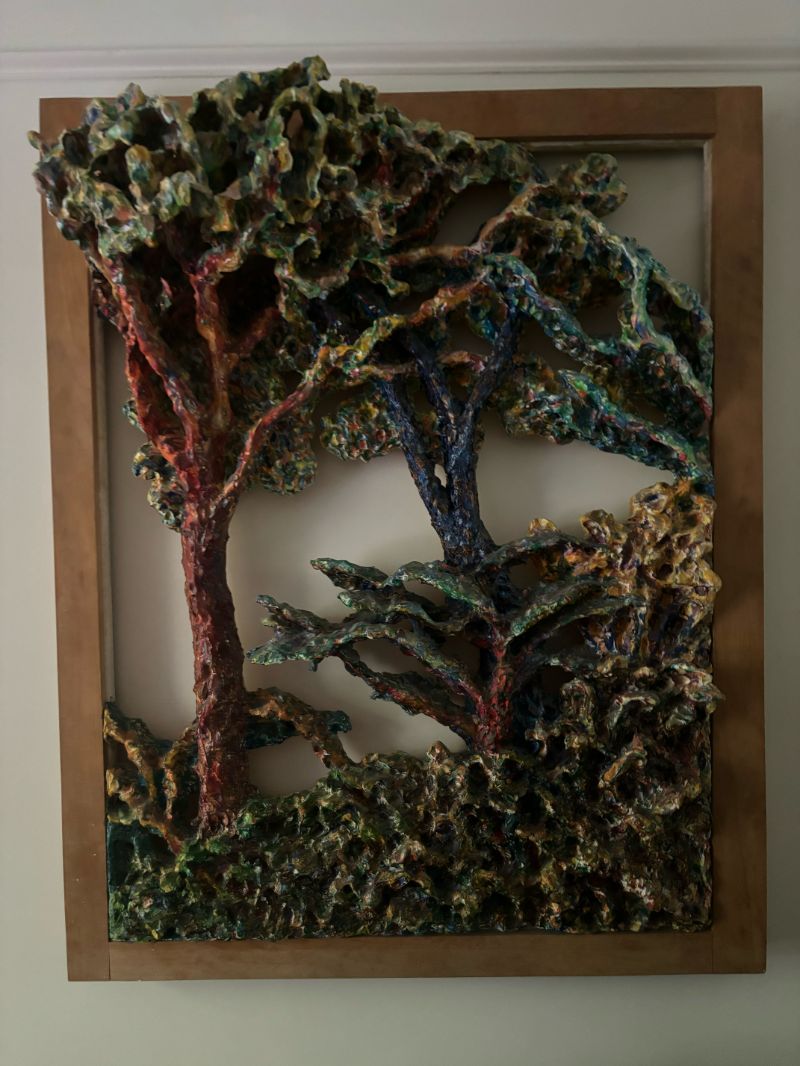
Adolph Rosenblatt
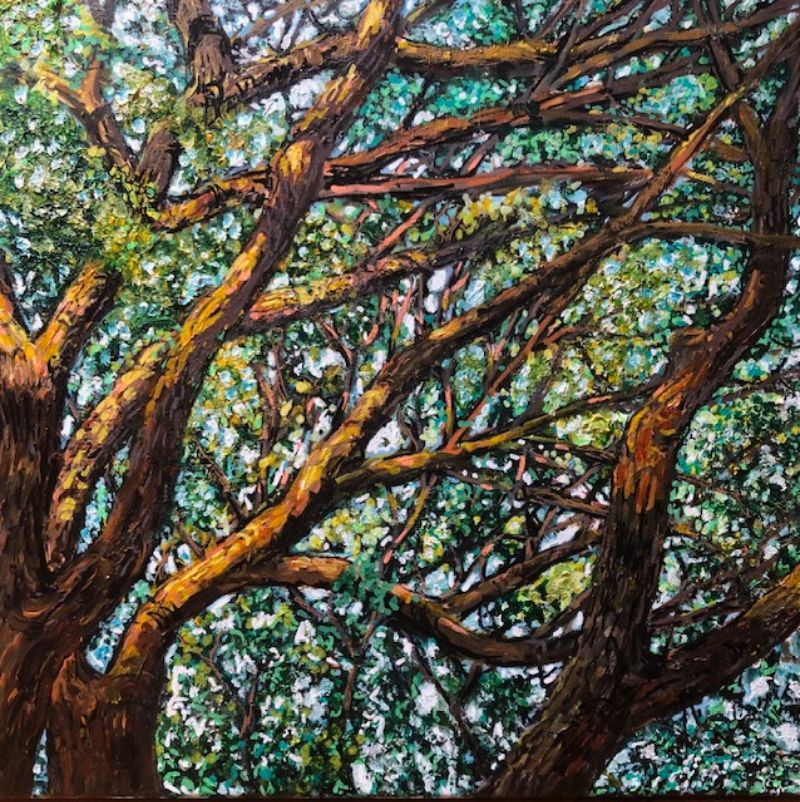
Eli Rosenblatt
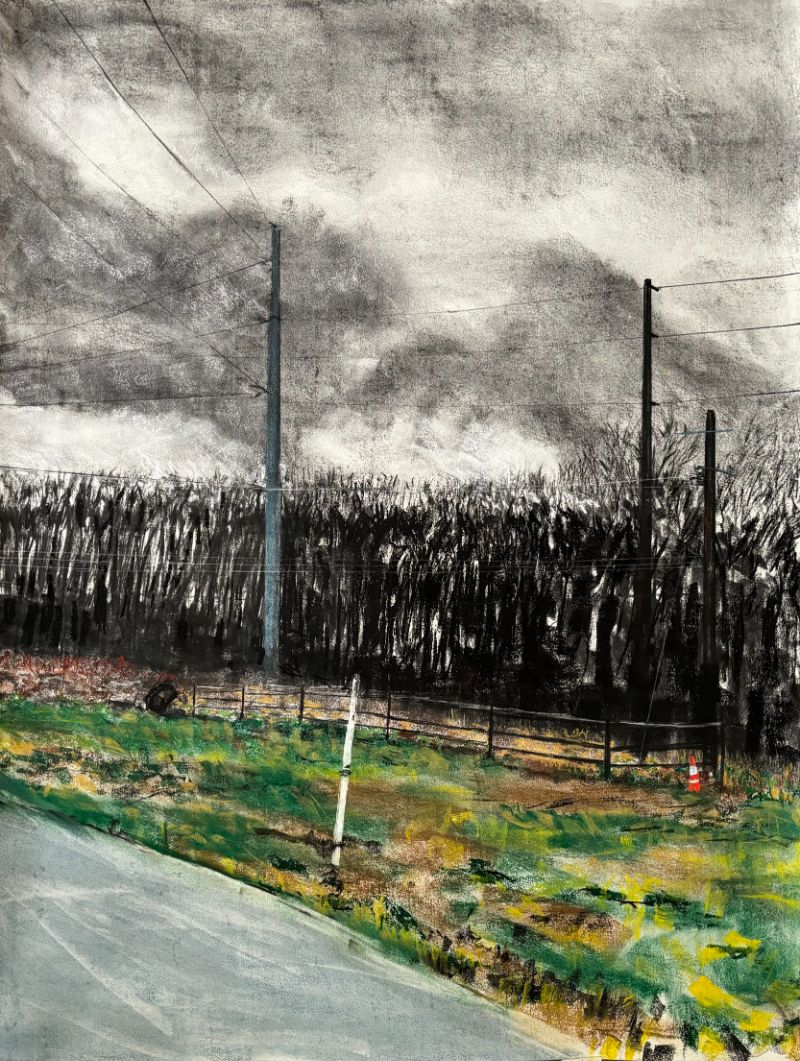
Joshua Rosenblatt
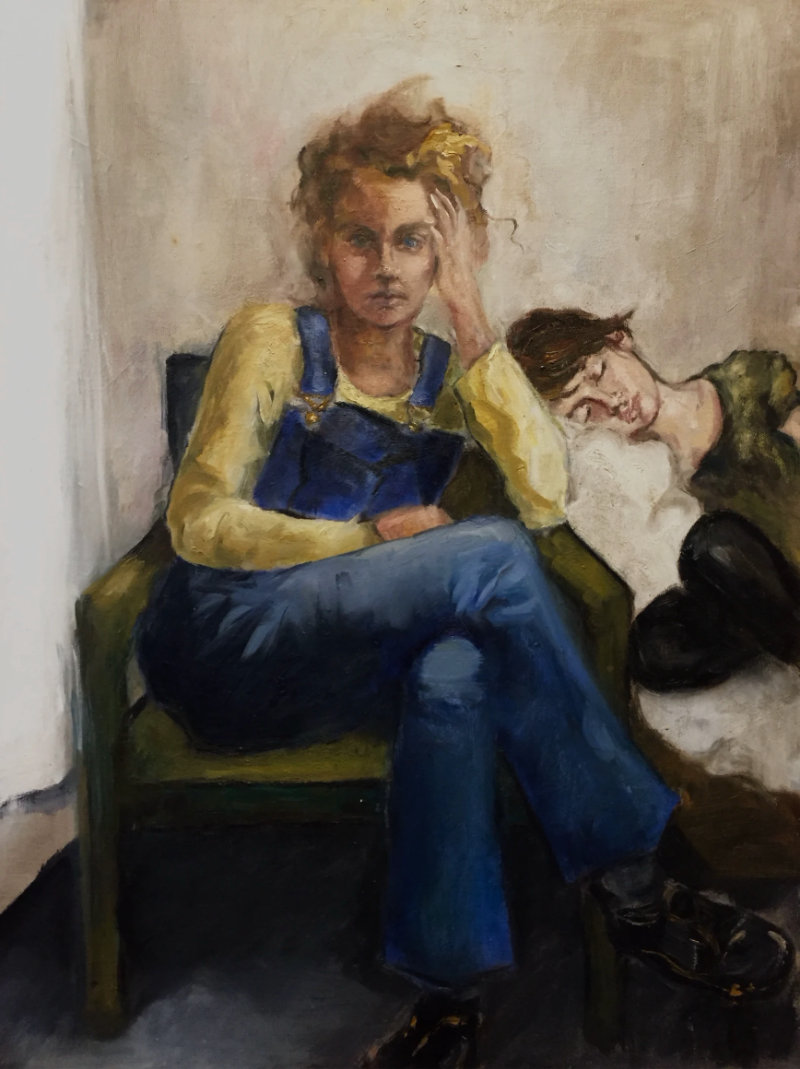
Eileen Coyne
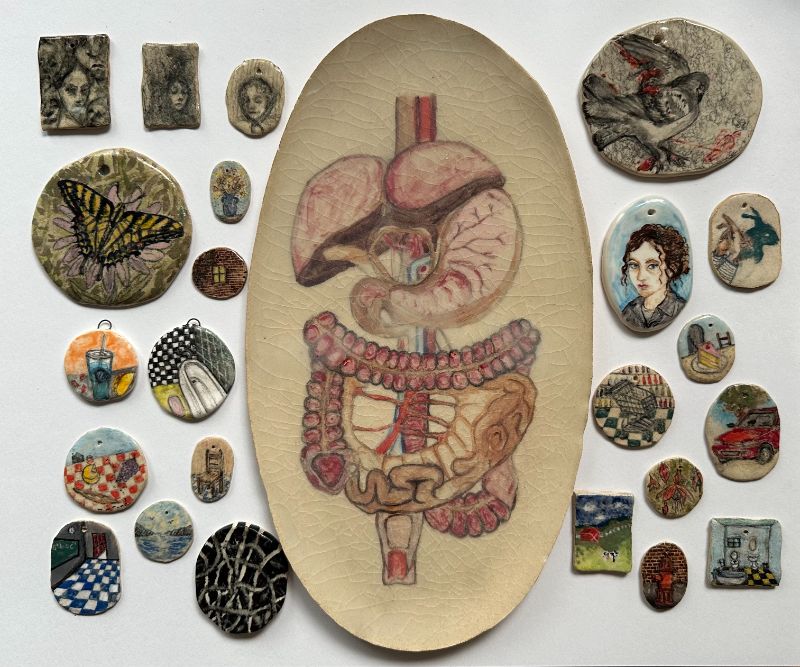
Caitlin Harris
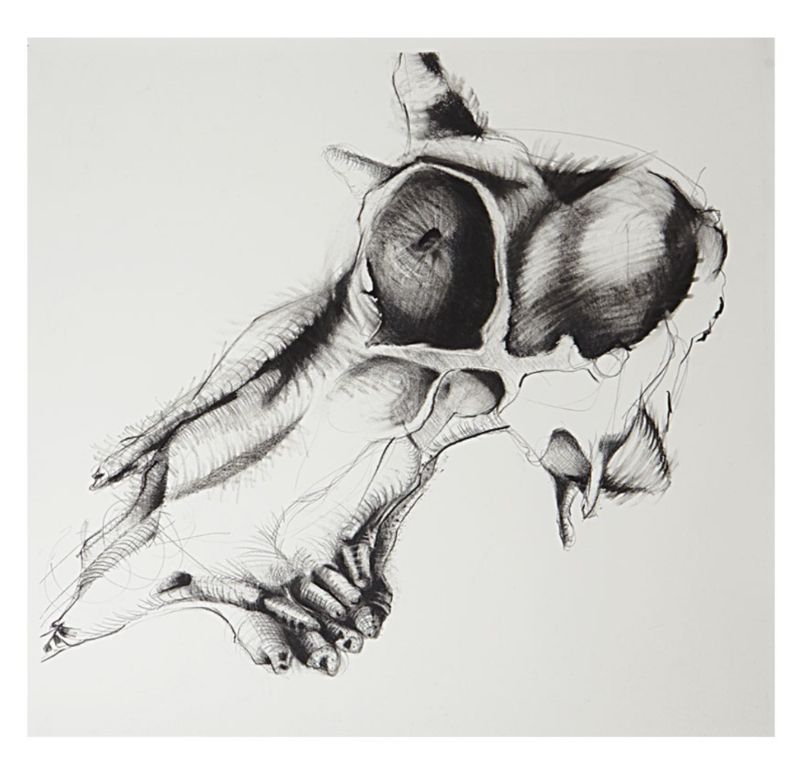
Emily Clark
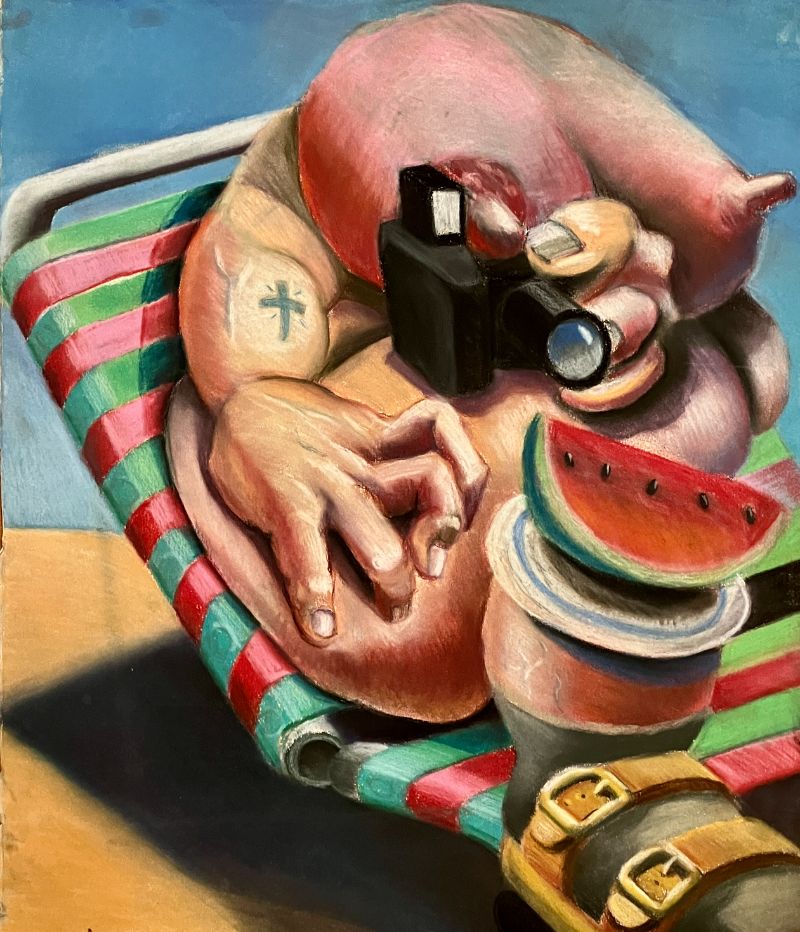
Jonathan Millstein
_%2010.5%20x%205%20x%205__2024.jpg)
Nate Millstein
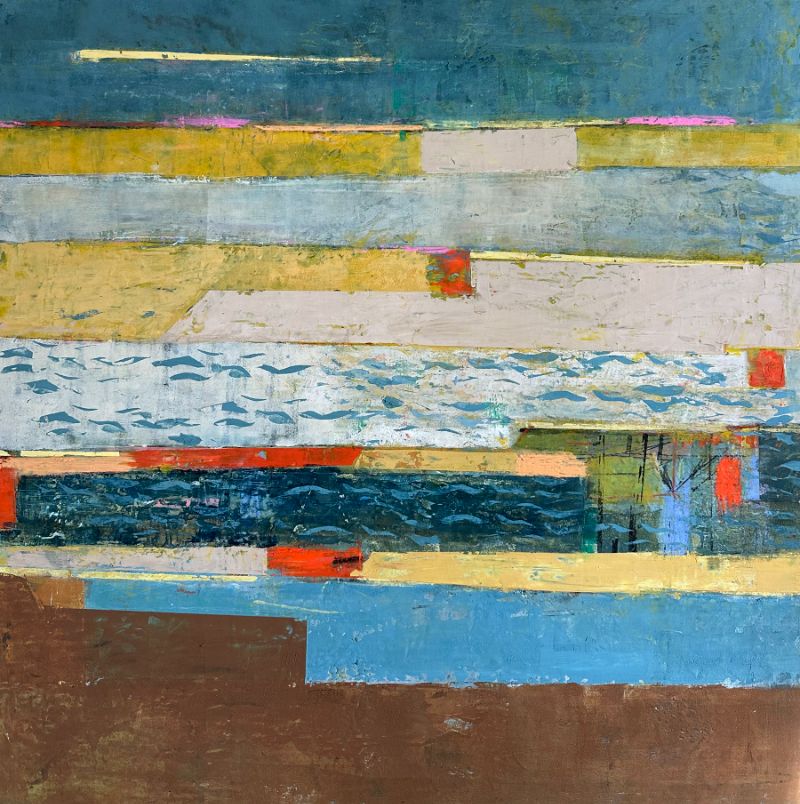
Mara Manning
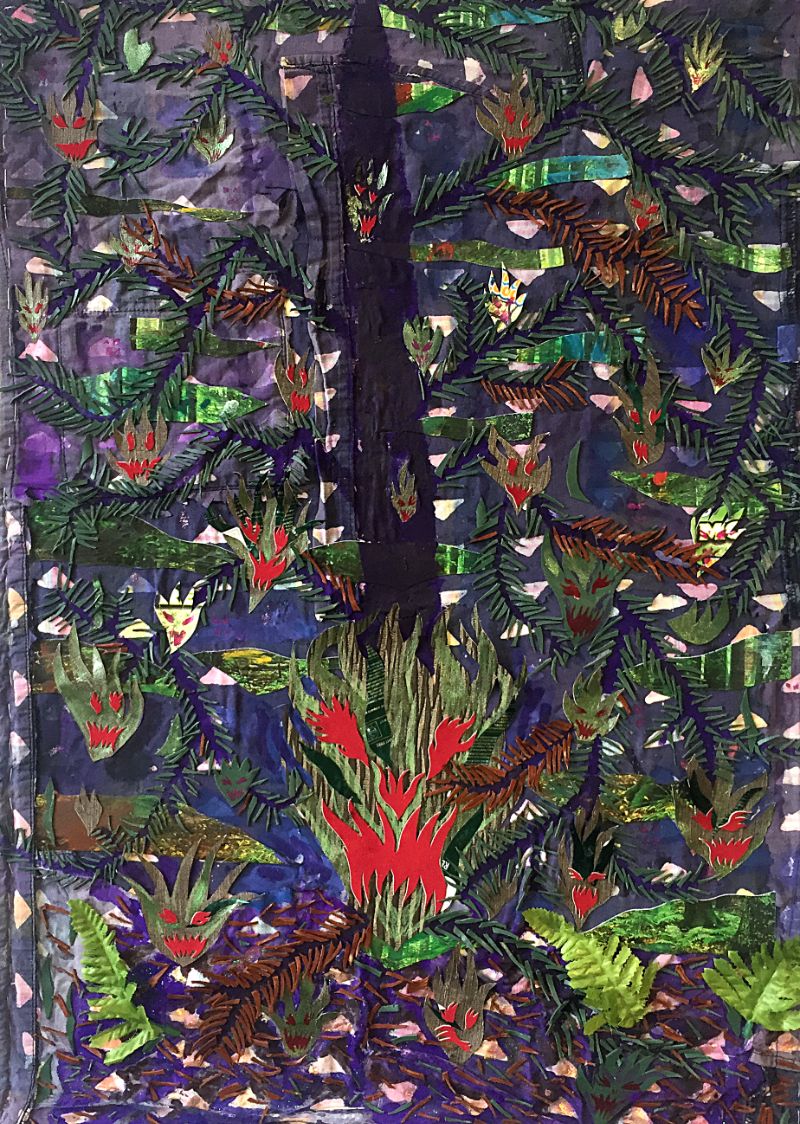
Kiefer Ledell Water
.jpg)
Frank Jackson
.jpg)
Amy Podmore

Ruby Jackson
.jpg)
Donald Fabrican
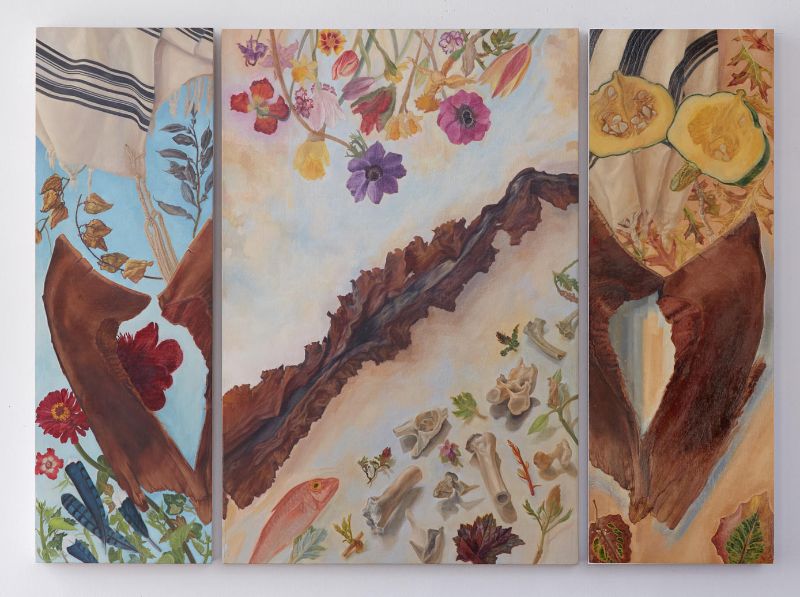
Gwen Fabricant
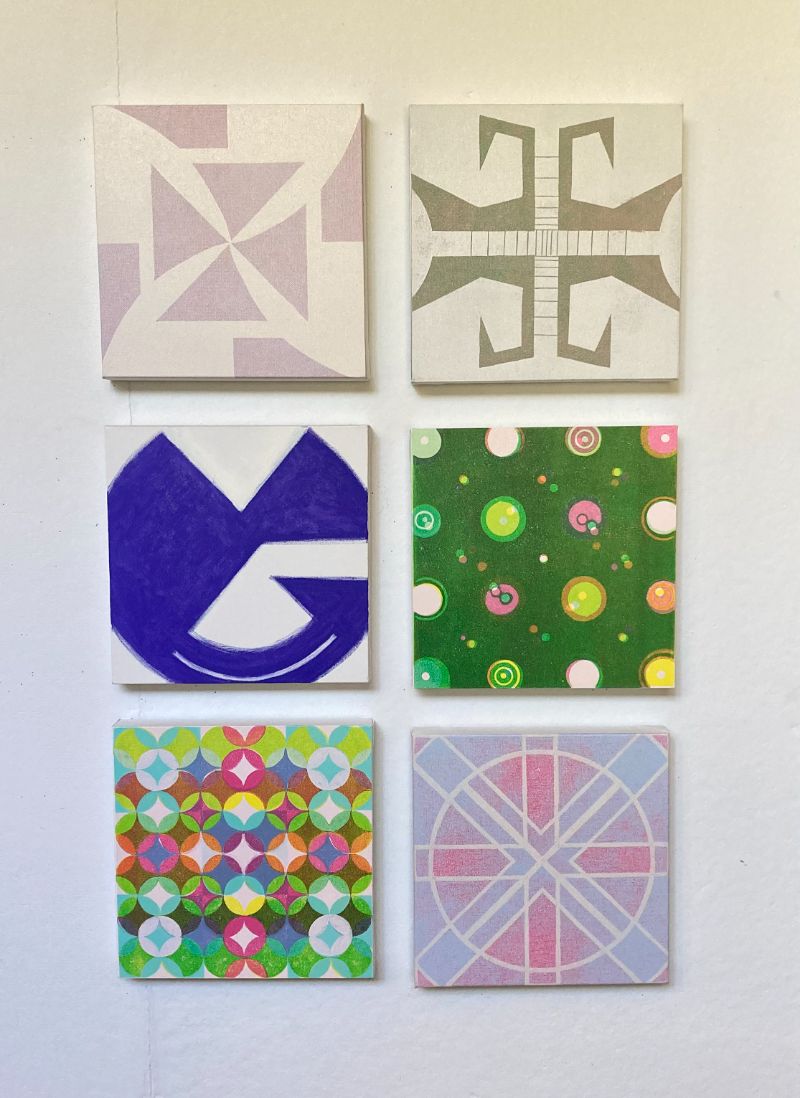
Jonathan Fabricant